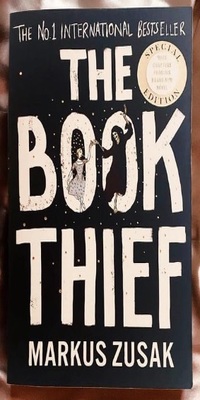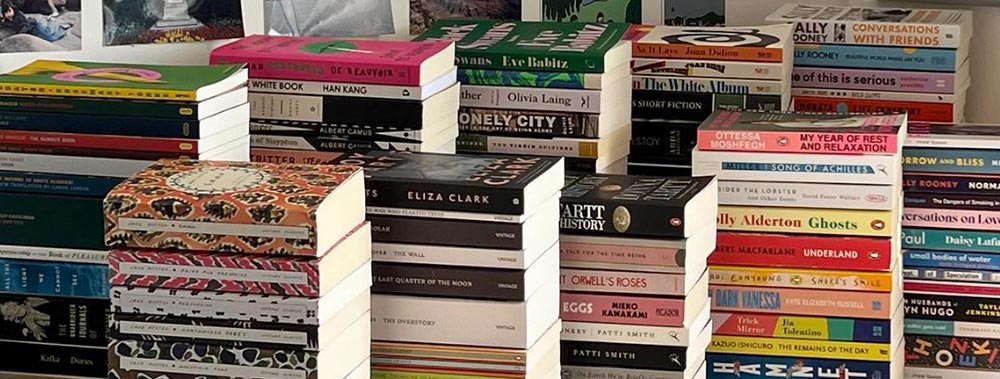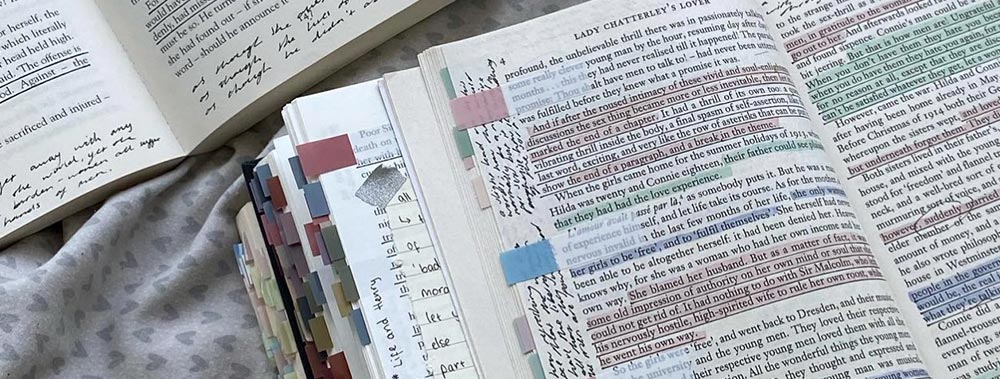The Book Thief: Summary, Plot, Characters, Literary Analysis & More
“The Book Thief,” penned by Markus Zusak and published in 2005, is a novel that transcends the boundaries of conventional storytelling.
This extraordinary literary work by Zusak has garnered immense critical acclaim and captured the hearts of readers worldwide.
Set against the backdrop of Nazi Germany during World War II, the story follows Liesel Meminger, a young girl living with her foster family, Hans and Rosa Hubermann, on Himmel Street.
Liesel’s life takes an unexpected turn when she steals books, discovering the transformative power of words.
Through Liesel’s journey, the novel delves into themes of resilience, the human spirit, and the profound impact of literature during a turbulent period in history.

"The Book Thief" is a moving story set in Nazi Germany during World War II, centered around a young girl named Liesel Meminger and her experiences with her foster family, friends, and the power of words.
Table of Contents
Summary The Plot Characters Key Themes Genres Language used Literary devices Summing upThe Plot
In “The Book Thief,” Liesel Meminger, a young girl, finds solace in reading amidst the turmoil of Nazi Germany. Living with her foster parents, Hans and Rosa Hubermann, on Himmel Street, Liesel’s life takes a twist when she befriends Rudy Steiner, a loyal and daring companion.
She also discovers an unexpected connection with Ilsa Hermann, the mayor’s wife, who allows her access to her vast library.
Liesel’s journey unfolds as she steals books to quench her thirst for knowledge and survival, all against the backdrop of a war-torn society where the power of words becomes both a refuge and a weapon.
Characters
Characters in “The Book Thief” are intricately woven into the tapestry of the narrative, each leaving a profound impact. Their resilience in the face of adversity and their complex relationships illuminate the human experience during wartime.
Liesel Meminger
The central protagonist, Liesel, evolves from a quiet and vulnerable girl into a resilient book thief. Her journey through Nazi Germany serves as a poignant testament to the transformative power of literature.
Rudy Steiner
Liesel’s best friend, Rudy, is a daring and compassionate companion. His unwavering friendship and audacious spirit provide both emotional support and moments of levity in the story.
Ilsa Hermann
The mayor’s wife, Ilsa, plays a pivotal role by allowing Liesel access to her extensive library. Her act of kindness fosters Liesel’s love for books and serves as a reminder of the power of compassion in a harsh world.
Key Themes
The themes in “The Book Thief” encompass the resilience of the human spirit, the transformative power of words, and the impact of kindness in the darkest of times. These themes converge to create a rich and emotionally resonant narrative.
Resilience
The novel portrays how characters like Liesel and Rudy find strength amidst adversity, illuminating the enduring spirit of humanity even in Nazi Germany’s darkest hours.
Power of Words
Through Liesel’s journey as a book thief, the story underscores how literature can provide solace, healing, and a means of resistance in a world marked by totalitarianism and censorship.
Kindness and Compassion
Acts of kindness, such as Ilsa Hermann’s gesture of opening her library to Liesel, highlight the profound impact of compassion in a world marred by cruelty, emphasizing the redemptive potential of humanity.
Genres in The Book Thief
Genres in “The Book Thief” blend perfectly historical fiction, bildungsroman, and wartime literature to create a uniquely evocative narrative.
Historical Fiction
The novel’s vivid portrayal of Nazi Germany during World War II immerses readers in a meticulously researched historical context, enhancing the story’s authenticity and depth.
Bildungsroman
“The Book Thief” follows Liesel’s coming-of-age journey, tracing her growth from innocence to understanding as she navigates the challenges and complexities of her wartime world.
Wartime Literature
The novel delves into the human experience during World War II, exploring how ordinary lives are affected and transformed by the chaos and brutality of war, making it a poignant addition to the wartime literature genre.
Language used in The Book Thief
Markus Zusak’s writing style in “The Book Thief” is a masterful blend of vivid imagery and poignant introspection.
As Liesel steals moments with stolen books, Zusak crafts prose that not only describes her actions but also delves into her thoughts and feelings, allowing readers to intimately share her experiences.
The language is evocative, painting a rich emotional landscape as Liesel realizes the profound impact of words, creating an atmospheric and emotionally charged narrative that captures the essence of her transformative journey.
Literary devices in The Book Thief
“The Book Thief” by Markus Zusak is a literary treasure trove of devices that enrich its narrative. Through poetic prose and symbolism, the novel paints a vivid picture of Nazi Germany during World War II, exploring the darkest corners of humanity while also illuminating acts of kindness and resilience.
Zusak’s use of foreshadowing adds layers of anticipation, and recurring motifs, like the concentration camp, Frau Hermann, and Liesel’s foster father, deepen the emotional resonance of the story, making it a compelling and thought-provoking read.
Similes
In “The Book Thief,” Markus Zusak employs striking similes to enhance the reader’s understanding and engagement.
For instance, when describing Hans Hubermann’s accordion playing, Zusak uses similes like “His fingers were like sausages,” vividly conveying the image of Hans’ clumsy yet heartfelt music, making readers feel the raw emotion in the scene.
Metaphors
Metaphors are also a powerful tool in the book. The metaphor of “Mein Kampf” as a symbol of Liesel’s life story signifies how her experiences, like the pages of Hitler’s book, are written and rewritten.
Alex Steiner’s rooftop hideout becomes a metaphorical sanctuary, representing safety amid chaos. These metaphors enrich the narrative, adding layers of meaning and emotional depth to the story.
Analogies
In “The Book Thief,” Markus Zusak employs analogies to simplify complex ideas. For example, the act of book burning is likened to “the temperature of a bonfire on the street,” equating the physical and emotional intensity of the event.
This analogy helps readers grasp the enormity of the loss and the symbolic significance of books in the story.
Imagery
Zusak’s vivid imagery creates sensory experiences, when Liesel sees Max, her vivid descriptions evoke the reader’s senses, making them feel the tension, fear, and longing that permeate the scene.
Through such imagery, Zusak masterfully immerses readers in the world of the book, enhancing their emotional connection to the characters and their experiences.
Symbolism
“The Book Thief” by Markus Zusak is rich with symbolism that deepens the exploration of its larger themes. Hans Hubermann represents the power of art and music to provide solace and unity during times of strife, symbolizing hope and human connection.
Similarly, the trumpet by Alex Steiner symbolizes the resilience of the human spirit, as he plays it to signal safety during air raids, reflecting themes of courage and perseverance in the face of adversity.
These symbols contribute to the novel’s overarching themes of resilience, hope, and the indomitable human spirit in the midst of war.
Personification
Zusak employs personification to breathe life into both the characters and the setting. When Liesel begins to read the “Grave Digger’s Handbook,” the book itself becomes a character, offering comfort and companionship in her tumultuous life.
The Jewish man hidden in Liesel’s foster family’s basement is personified as a symbol of the hidden suffering and resilience during Nazi Germany, adding depth to his character.
The arrival of Liesel in Molching is personified through the town’s reaction, making it seem as though the town itself holds secrets and emotions, enriching the narrative with a palpable atmosphere.
Hyperbole
In “The Book Thief,” Markus Zusak uses hyperbole to create dramatic impact and emotional resonance.
For instance, Liesel’s arrival in Molching is described with exaggerated intensity, highlighting the significance of this moment in her life and building anticipation for her future experiences in the town.
Irony
The novel also features various types of irony. Dramatic irony is evident when Liesel’s mother invites her to a new home, with readers understanding the gravity of the situation while Liesel remains unaware.
Situational irony arises when Frau Hermann’s library becomes a hidden sanctuary, the opposite of its intended purpose. Irony underscores the complex and often paradoxical nature of life during wartime.
Juxtaposition
Juxtaposition in “The Book Thief” is a literary technique that masterfully highlights stark contrasts and provokes thought-provoking scenarios.
The death of Liesel’s brother creates a poignant juxtaposition between the innocence of childhood and the harsh realities of wartime.
The presence of Erik Vandenburg, a member of the Hitler Youth, within Liesel’s life, juxtaposes youthful indoctrination with the quest for individuality, offering readers a profound exploration of the complexities of growing up in Nazi Germany.
Paradox
“The Book Thief” abounds with paradoxical situations and statements that deepen its narrative. Liesel’s discovery of “so much lightness” amidst the darkness of war is a paradoxical concept that underscores the resilience of the human spirit in adversity.
The act of Rosa Hubermann hiding her tender side behind a gruff exterior exemplifies the paradox of tough love.
Liesel’s finding and hiding of Max, a Jewish man, amidst Nazi persecution, creates a paradox of compassion and danger, revealing the complexities of moral choices in a time of brutality. These paradoxes enrich the novel’s exploration of wartime humanity.
Allusion
In “The Book Thief,” Markus Zusak incorporates literary and historical allusions, adding depth to the story. The death of Liesel’s brother, Werner, alludes to the tragic toll of war on innocent lives.
Liesel finding and hiding Max, a Jewish man, alludes to acts of resistance against Nazi persecution, echoing historical tales of courage and defiance. These allusions connect the story to broader historical and moral contexts, enriching the narrative’s impact.
Repetition
Repetition is a subtle yet powerful literary device in “The Book Thief.” The recurring motif of Liesel’s dead brother underscores her trauma, emphasizing the lasting impact of loss and mortality in the story.
The repetition of Liesel’s connection to books, as a book thief, reinforces the thematic importance of literature in her life, highlighting its role as a source of solace, empowerment, and resistance in the midst of Nazi Germany’s turmoil.
The Use of Dialogue
Dialogue in “The Book Thief” is skillfully employed to convey character traits, themes, and narrative tension. It provides insights into characters like Hans, who, through his conversations, reveals his compassionate and anti-Nazi sentiments.
Dialogue also captures the chilling indoctrination of the Hitler Youth during the carnival scene, effectively conveying the pervasive influence of the Nazi party.
These dialogues enhance character development and serve as a vehicle for exploring the novel’s overarching themes and conflicts.
Word Play
While the book doesn’t heavily rely on puns or double entendres, it uses figurative language and metaphors that infuse the text with vivid imagery and layered meanings.
For instance, when Liesel finds and hides Max, the Jewish prisoner, the act of “hiding” not only refers to his physical concealment but also symbolizes the shelter Liesel provides from the oppressive Nazi regime, creating a nuanced wordplay that enriches the story.
Parallelism
The parallelism between Werner’s death and Liesel’s arrival at the Hubermanns’ home creates a poignant juxtaposition, highlighting the cycle of life and death amid the chaos of war.
Liesel’s actions, such as saving Hans’s life and hiding Max, exhibit parallel acts of courage and compassion, reinforcing the novel’s themes of resilience and humanity in the face of adversity. These instances of parallelism contribute to the narrative’s depth and emotional impact.
Rhetorical Devices
In “The Book Thief,” Markus Zusak employs rhetorical devices to enhance the persuasive effect of the narrative. Rhetorical questions, such as pondering the consequences of Max’s departure or the impact of air raids, engage readers’ critical thinking, prompting them to reflect on the characters’ experiences.
The repeated use of parallelism, such as Liesel’s finding and losing, emphasizes the cyclical nature of life during wartime, reinforcing the themes of loss and resilience.
These rhetorical devices not only captivate the reader but also underline the emotional depth and complexity of the story.
The Book Thief: FAQs
In this section of “The Book Thief” summary, we explore frequently asked questions and delve into key aspects of this captivating novel.
What is the main message of The Book Thief?
The main message of “The Book Thief” is the resilience of the human spirit in the face of adversity, the power of words to inspire, and the enduring impact of kindness and compassion.
Why is The Book Thief so sad?
“The Book Thief” is emotionally poignant because it portrays the harsh realities of Nazi Germany during World War II, including loss, discrimination, and the enduring effects of war.
What age is The Book Thief appropriate for?
“The Book Thief” is appropriate for older teens and adults due to its mature themes and historical context.
Who married Liesel?
Liesel eventually marries Max Vandenburg in the epilogue.
Is The Book Thief easy to read?
While “The Book Thief” can be emotionally intense, its engaging storytelling and unique narrative voice make it accessible and compelling for most readers.
What happens when Liesel steals a book?
When Liesel steals a book in “The Book Thief,” it marks the beginning of her transformation. Initially, she faces guilt and fear, but as she discovers the joy of reading and sharing books with others, it becomes a source of solace and empowerment, shaping her life and relationships.
What is The Book Thief about no spoilers?
“The Book Thief” is a moving story set in Nazi Germany during World War II, centered around a young girl named Liesel Meminger and her experiences with her foster family, friends, and the power of words.
Summing up: The Book Thief: Summary, Plot & More
As you now know from this “The Book Thief” summary, this work by Markus Zusak is a masterpiece that transcends the boundaries of conventional storytelling.
Its powerful narrative, rich characters, and thought-provoking themes make it a literary gem that leaves a profound impact on readers.
Through the lens of Liesel Meminger’s journey, the book explores the resilience of the human spirit, the transformative power of words, and the enduring significance of kindness in the darkest of times.
Zusak’s masterful use of literary devices, poignant symbolism, and compelling storytelling come together to create an emotionally charged and unforgettable reading experience.
“The Book Thief” is a testament to the enduring power of literature to inspire, console, and illuminate even in the darkest of hours.
Other Notable Works by Markus Zusak
If you are interested in “The Book Thief”, you may be interested in other works by Markus Zusak including:
- “I Am the Messenger” (also known as “The Messenger”): This novel delves into the life of Ed Kennedy, an ordinary cab driver, who becomes an unexpected hero after receiving mysterious playing cards with cryptic messages.
- “Fighting Ruben Wolfe” and “Getting the Girl”: These two books are part of the Wolfe Brothers series, exploring the lives and struggles of two working-class brothers, Cameron and Ruben Wolfe.
- “The Bridge of Clay”: This novel tells the story of the five Dunbar brothers and their complex family dynamics, with a focus on one brother, Clay, and his quest to build a bridge.
These works by Markus Zusak showcase his storytelling prowess and his ability to explore diverse themes and characters.







